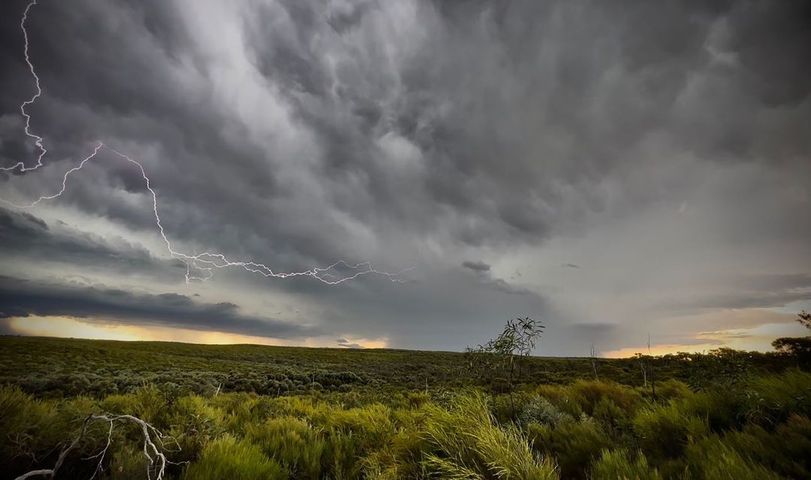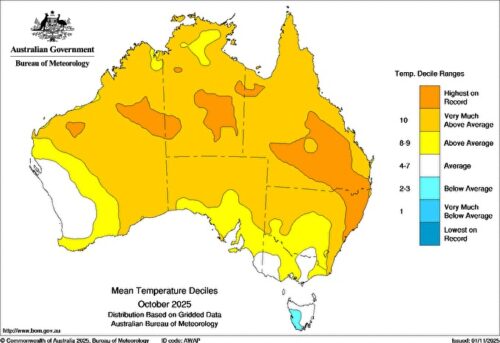Australia just experienced its coolest start to a year since 2002 as the ongoing influence of La Nina helped suppress temperatures over large parts of the country.
The national mean temperature in Australia during January was equal to the 1961 to 1990 average, making it the country’s coolest January in 21 years.

Image: Mean temperature deciles in January 2023. Source: Bureau of Meteorology
Daytime maximum temperatures were particularly cool across large swathes of northern and central Australia, thanks to abundant cloud cover, frequent rain and the cooling effect of water evaporating from the sodden landscape.
Australia’s mean maximum temperature last month came in 0.3ºC below the 1961 to 1990 average, also the coolest national mean maximum since 2002.

Image: Cloud and lightning near Bendigo, Vic in early January 2023. Source: @chxute74 / Instagram
Rainfall was mixed across Australia in January, with above average falls in the north and patches of drier than usual weather in the east and south.

Image: Rainfall deciles in January 2023. Source: Bureau of Meteorology
When averaging rainfall across the country, Australia just had its wettest January in six years.
DTN APAC can provide climate updates tailored to your business, whether its local or international. To request a briefing or to find out more please email us at apac.sales@dtn.com.






